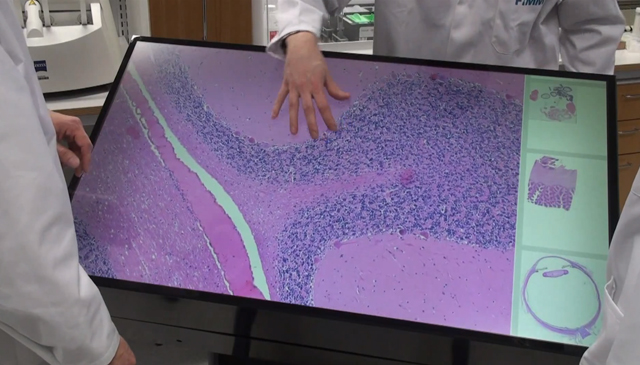To say there's a lot of discussion around mobile healthcare is putting it mildly. In the past month or so we've been told day-in, day-out that 2011 will be the year of mhealth. The consensus is fuelled by reports, like the one from HIMSS, that found that
25 percent of hospitals plan to deploy iPDAS immediately while 70 percent say that they have plans to do so over the coming year. That's news to bring joy to Apple, but it also indicates the extent to which the device has won acceptance in a traditionally hard to please sector.
But 2011 will also be the year that other hardware and operating systems will catch up. The past week, alone, has seen a cluster of new reports predicting the rise of Android, and Windows 7 mobile, and the resurgence of BlackBerry as the desire for smartphones and tablets spreads beyond early adopters to mainstream consumers who remain attached to their existing platform or are simply seeking a less expensive alternative.
According to UK-based Strategy Analytics, On the back of Samsung Galaxy Tab sales
Android tablets took 22 per cent of the global tablet market last quarter up 120 per cent from the previous quarter. Apple iPad's still held 75 per cent of the market, but down from almost total dominance at 95 per cent.
There's an equally dramatic shake out in the smartphone market. Yesterday
analysts Canalys published figures showing that shipments of Android powered smartphones had overtaken devices running Symbian. And then of course there's sleeping giant, Microsoft. It shipped two million Windows 7 Mobile devices last quarter. If that sounds like a slow start, don't underestimate the marketing power behind the platform. And whatever the sales figures say, it's a great device. As the message gets out, expect Microsoft to creep up on both Symbian and RIM.
The implications for mobile healthcare solutions providers are important here. First mover advantage in the App Store has given solution providers from imaging to EMR a lot of coverage. And here at iSOFT we've already taken the decision to run some solutions on the iPhone platform. But we think that the market, globally, is far more diverse and that there's a large audience, a silent majority even, who have different views. That's why we recently announced that
we have joined the BlackBerry Alliance Program as a BlackBerry Alliance Elite Member. This will further support our philosophy of introducing applications for care beyond traditional settings and hospital walls.
We're already working on a range of applications to help clinical staff deliver care more efficiently and patients to manage their conditions more effectively. These include apps for doctors to download daily workloads and appointments, for community nurses to record patient details and for patients to check vital signs, arrange appointments and referrals, and order repeat prescriptions.
From a marketing perspective, we also know that the U.K. NHS in particular is a prolific user of BlackBerry smartphones so already has the critical mass and requisite infrastructure, including security. This is vital for us at a time when data privacy and security are more prominent than ever in the age of Facebook and Wikileaks. The security credentials of the BlackBerry platform are well documented, and a huge advantage given the obvious concerns of patient confidentially and privacy issues.
In addition, we've also taken our first steps into supporting
Windows Phone 7 with The Lorenzo Smart Solutions Observations application. This allows clinicians to securely access patient lists and record observations for their patients on Windows Phone 7. No patient data is stored on the device. In addition, providers can decide whether to make the data available across just an organisation's WiFi network or any WiFi/3G connection. We're very confident that Windows Phone 7 will take off in 2011, not least because of the sheer scale of Microsoft's partner network and the numbers of developers available to build enterprise apps including healthcare.
Finally, don't forget that a year is a long, long time in the world of mobile devices. To put things in perspective, the iPAD was announced almost exactly a year ago, but it wasn't launched until April. The past ten months have radically transformed our expectations of mhealth in healthcare, but the next year will actually deliver. And Apple won't have all the good lines.







 Researchers led by (from left) Drs. Eric Olson, Hesham Sadek and Enzo Porrello found in an animal study that newborn heart tissue was able to repair itself within weeks of being damaged.
Researchers led by (from left) Drs. Eric Olson, Hesham Sadek and Enzo Porrello found in an animal study that newborn heart tissue was able to repair itself within weeks of being damaged.






